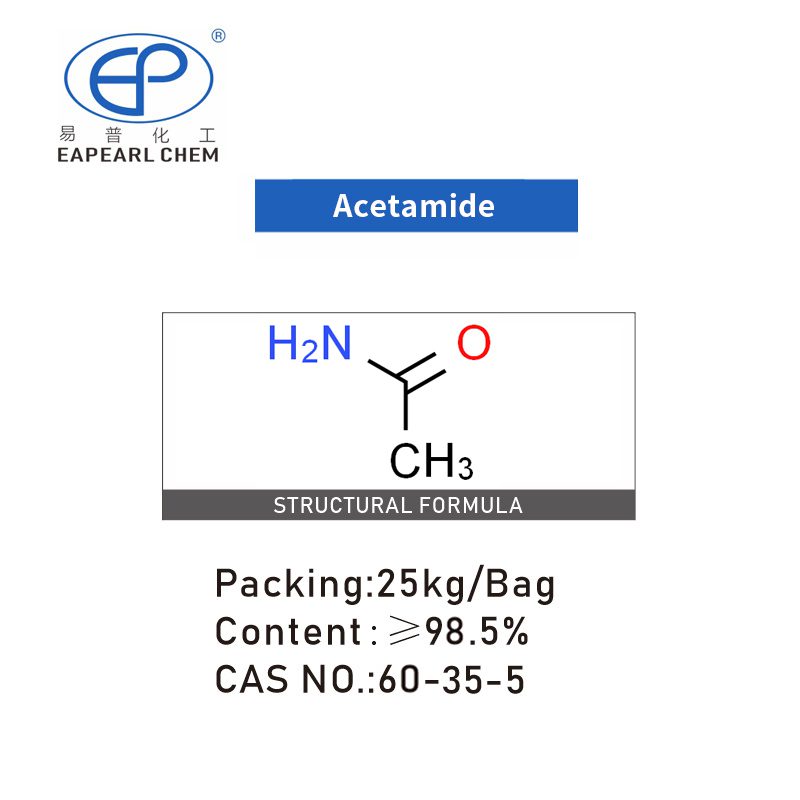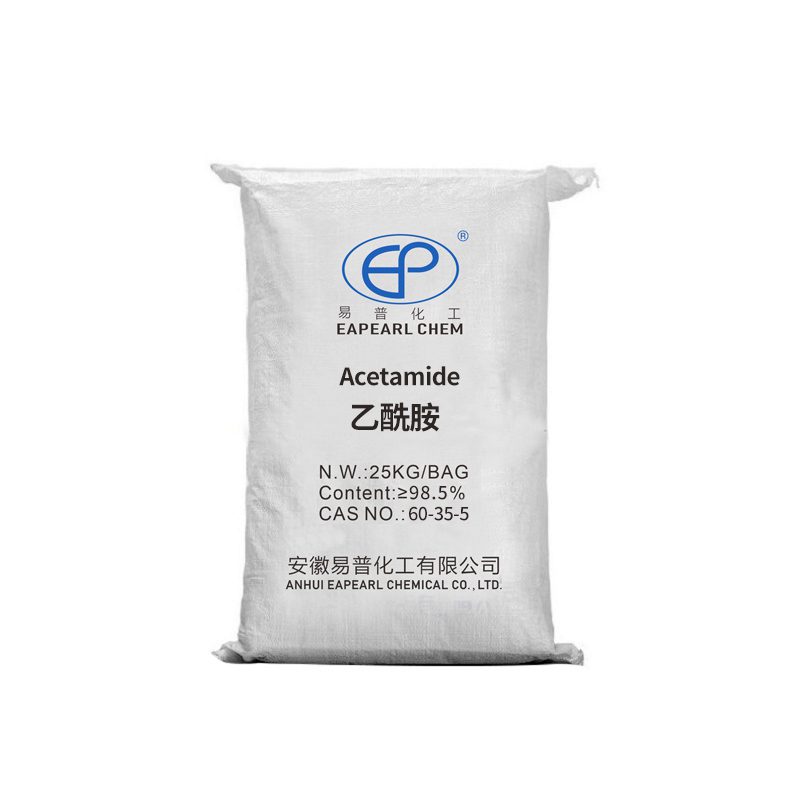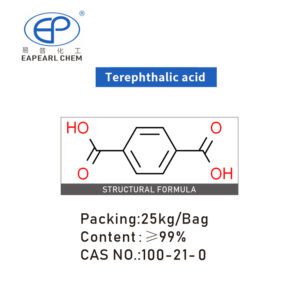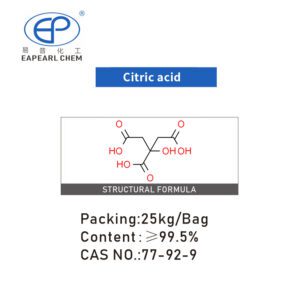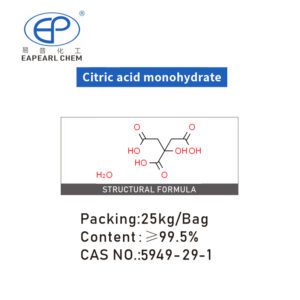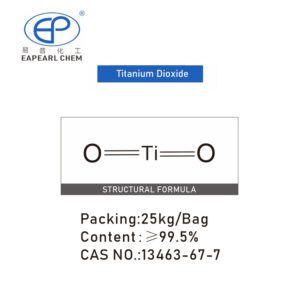Acetamide
Acetamide, an organic compound, possesses a colorless and crystal-clear appearance. Its odor resembles that of mouse secretions, exuding a fascinating allure. It showcases flammability and low toxicity. Moreover, acetamide exhibits solubility in water, ethanol, trichloromethane, pyridine, and glycerol, with a slight solubility in ether. In cases of acute (short-term) exposure, it may lead to mild skin irritation.
| Product Name: | Acetamide |
|---|---|
| CAS No.: | 60-35-5 |
| Purity | 98.5% |
| Packing: | 1ton, 25kg/Bag |
| HScode: | 29241900 |
We use the latest network security technology to protect your personal information from leakage, and to ensure that you can shop safely and securely.
Share
Description:
Prepare method:
- Combine glacial acetic acid with ammonia to form ammonium acetate.
- Subject it to pyrolysis and dehydration to obtain acetamide.
- Crystallize and separate the resulting product.
The required amount of raw materials is 1700kg of acetic acid (99%) and 750kg of liquid ammonia (99%) per ton. For laboratory synthesis, adhere to the stepwise procedure outlined below. Begin by placing 3kg of glacial acetic acid in a 5L flask and introducing ammonium carbonate equivalent to 400g of ammonia. Equip the flask with a high-efficiency fractionating column, a condenser, and a receiver. Gradually heat the reaction mixture until it reaches a gentle boil, ensuring the distillation rate remains below 180mg/h. Maintain the temperature increase from the bottom to the top at 110℃. At this stage, you will have a mixture of water and acetic acid, measuring between 1400 and 1500ml. Replace the receiver, increase the heat slowly, and continue distillation at the same rate until the top temperature reaches 140 °C.
The resulting distillate, measuring 500-700ml, mainly consists of acetic acid and should be reserved for subsequent use. Transfer the remaining residue to a flask with a fractionating column and an air condenser for atmospheric distillation. Collect the fractions at pre-210 °C and 210-216 °C, respectively. The latter will be acetamide, weighing 1150-1200g, while the former can also undergo distillation to recover a portion of the product. Combined, Both fractions will weigh 1200-1250g, yielding 87%-90%. Acetamide is often subjected to refining through distillation and solvent recrystallization. Commonly used solvents include acetone, benzene, ethyl acetate, methyl acetate, chloroform, dioxane, or a mixture of benzene and ethyl acetate. For instance, if 1kg of acetamide is prepared using the method above, it can be recrystallized using a mixed solvent composed of 1L of benzene and 300ml of ethyl acetate to yield a colorless, needle-like pure product. The purity of industrially produced acetamide is not less than 98%, and its freezing point is not less than 76 °C.
Synonyms:
Characteristics:
| Molecular Formula | C2H5NO |
| Molar Mass | 59.07 |
| Density | 1.159 |
| Melting Point | 78-80°C(lit.) |
| Boling Point | 221°C(lit.) |
| Flash Point | 220-222°C |
| JECFA Number | 1592 |
| Water Solubility | 2000 g/L (20 ºC) |
| Solubility | Soluble in water, alcohol, pyridine, chloroform, glycerin and hot benzene, almost insoluble in ether |
| Vapor Presure | 1 mm Hg ( 65 °C) |
| Appearance | Colorless crystal |
| Color | White |
| Odor | Mousy odor |
| Exposure Limit | ACGIH: TWA 1 ppm |
| Merck | 14,43 |
| BRN | 1071207 |
| pKa | 0.63(at 25℃) |
| Storage Condition | Store below +30°C. |
| Stability | Stable. Incompatible with strong acids, strong oxidizing agents, strong bases. Deliquescent. Triboluminescent. |
| Sensitive | Easily absorbing moisture |
| Refractive Index | 1.4274 |
| MDL | MFCD00008023 |
| Physical and Chemical Properties | Density 1.159 melting point 79-81°C boiling point 221°C water-soluble 2000g/L (20°C) |
| PSA | 43.1 |
| XLogP3 | -1.26 |
| Toxicity | Oral-Rat LD50: 7000 mg/kg; Oral-Mouse LD50: 12900 mg/kg |
| Flammability characteristics | Flammable; burning produces toxic nitrogen oxide gas |
Use
FAQ:
Q1. What is Acetamide?
A1. Acetamide, with the chemical formula CH3CONH2, is an organic compound utilized extensively across various industries. It serves as a solvent, plasticizer, and raw material.
Q2. What are the typical applications of Acetamide?
A2. Acetamide finds diverse applications in an array of industries. It serves as a solvent in the production of various chemicals and pharmaceuticals. Additionally, it acts as a plasticizer, enhancing the flexibility and durability of plastics, fibers, and resins—furthermore, Acetamide functions as a crucial raw material for synthesizing numerous organic compounds.
Q3. What are the key features and benefits of Acetamide?
A3. Acetamide offers many advantages that render it suitable for various applications. It exhibits excellent solubility in water and various organic solvents, making it an ideal choice as a solvent. Moreover, Acetamide functions as a plasticizer, enhancing the flexibility and durability of plastics and fibers. Its versatility as a raw material enables synthesizing various chemical compounds.
Q4. What are the storage and handling requirements for Acetamide?
A4. To ensure proper storage of Acetamide, it should be kept in a cool, dry, and well-ventilated area, away from direct sunlight and heat sources. It is crucial to tightly seal the containers when not in use to prevent moisture absorption. Properly labeled containers are essential for correct identification and to avoid any mix-ups. When handling Acetamide, wearing appropriate personal protective equipment, including gloves and safety goggles, is advisable to minimize potential risks.
Q5. Is Acetamide hazardous to health or the environment?
A5. While Acetamide is generally considered a low-toxicity compound, cautious handling is necessary to minimize exposure. Prolonged or excessive exposure may lead to skin, eyes, and respiratory system irritation. It is recommended to follow proper safety measures and guidelines, including adequate ventilation and the use of personal protective equipment when working with Acetamide. As with any chemical, it is crucial to dispose of Acetamide in compliance with local regulations to prevent environmental contamination.
Q6. What are the available packaging options for Acetamide?
A6. We provide a wide range of packaging options for Acetamide to cater to your specific requirements. These options may include plastic or metal containers, drums, or bulk shipments. Our dedicated team can work closely with you to determine the most suitable packaging solution for your needs.
Q7. Can you provide technical support or documentation for Acetamide?
A7. Certainly, we offer comprehensive technical support and documentation for Acetamide. Our experienced team is ready to assist you with any technical inquiries or specific information you may require about the product. Additionally, we can provide certificates of analysis (COA), safety data sheets (SDS), and other relevant documentation upon request.
Q8. How can I place an order for Acetamide?
A8. To order Acetamide, please get in touch with our dedicated sales team directly. They will guide you through ordering, discuss pricing and packaging options, and provide any necessary documentation. Our team is committed to ensuring a smooth and efficient purchasing experience for all our valued customers.
Please don’t hesitate to contact us if you have any further questions or require additional information about Acetamide. We are here to provide the assistance you need.
相关产品
Loading Video or Picture:



















